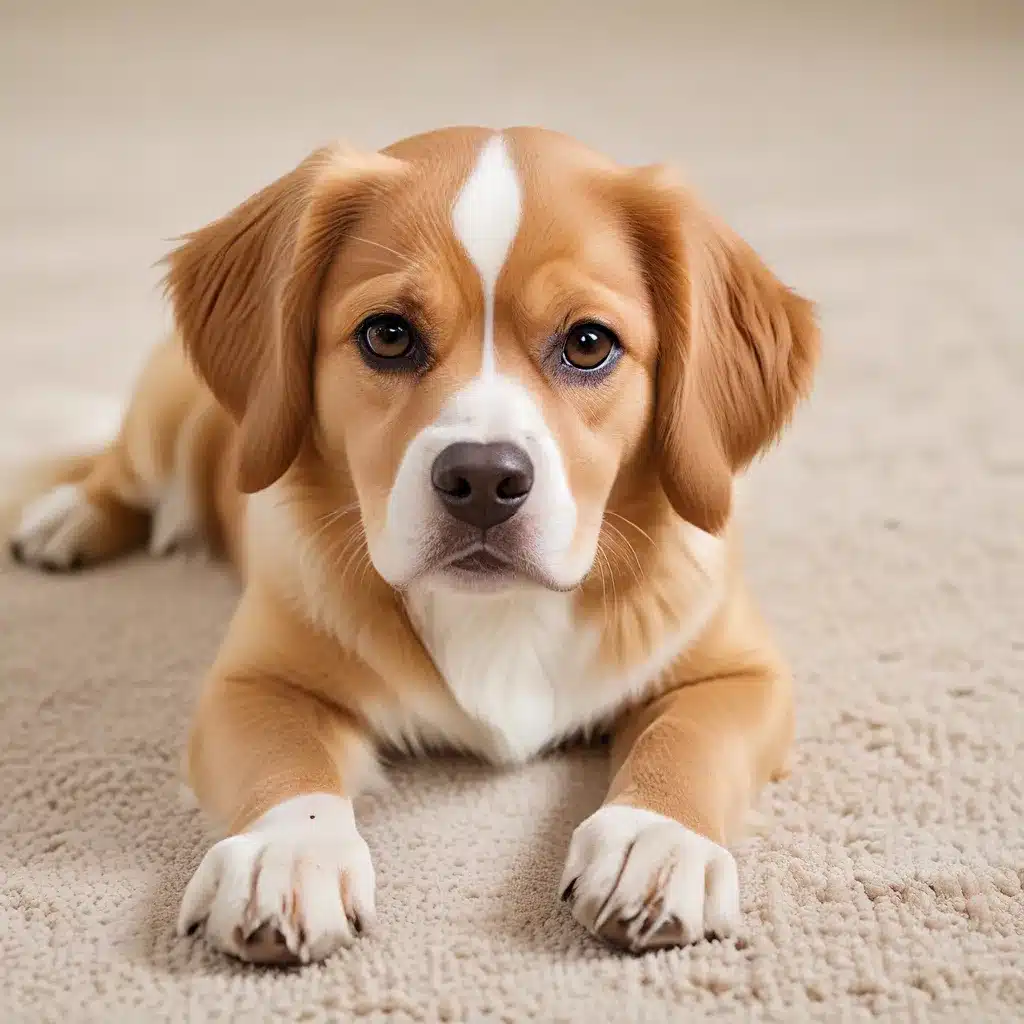
Ah, the joys of pet ownership – the unconditional love, the endless snuggles, the… muddy pawprints scattered all over your pristine carpet. If you’re like me, you know the struggle all too well. Whether it’s your rambunctious puppy or your crafty feline friend, those little paws seem to leave their mark everywhere they go.
But fear not, my fellow pet parents! Today, I’m here to share my hard-earned carpet cleaning secrets that will have your floors looking spotless, no matter how many leaps and bounds your furry companions take.
Identifying the Culprit: Understanding Pet Stains
Before we dive into the cleaning process, it’s important to understand the different types of pet stains you might be dealing with. After all, the key to effective carpet cleaning is knowing your enemy.
Urine Stains: These are the most common pet-related carpet disasters, and they can be particularly challenging to tackle. The acidic nature of urine can quickly set in and cause discoloration, leaving you with a pungent odor that’s hard to shake.
Mud and Dirt Stains: When your beloved pup decides to take a stroll through the backyard after a rainstorm, those muddy paws are bound to make their way onto your pristine carpets. These stains can be tough to remove, especially if they’ve had time to dry and set in.
Food and Drink Spills: Accidents happen, and sometimes our furry friends can’t resist a tasty treat or a spilled beverage. These stains can be tricky, as they often require a delicate touch to avoid further damage.
Vomit and Feces: Let’s face it, sometimes our pets’ digestive systems don’t cooperate, and the result is a messy situation on your carpets. These stains not only look unpleasant but can also pose a health risk if not properly addressed.
Carpet Cleaning Strategies: Tackling Pet Stains Head-On
Now that we’ve identified the culprits, let’s dive into the nitty-gritty of carpet cleaning. Here are my tried-and-true methods for removing those pesky pet stains:
Urine Stains
Carpet Cleaning Maconga always recommends acting quickly when it comes to urine stains. The longer the stain sits, the harder it will be to remove. Start by blotting the area with a clean, absorbent cloth or paper towels to soak up as much of the urine as possible.
Next, mix a solution of warm water and a mild, pet-safe detergent. Gently scrub the stain, being careful not to rub too hard and spread the stain further. After that, rinse the area with clean water and blot it dry.
If the stain persists, consider using a enzyme-based cleaner designed specifically for pet accidents. These cleaners break down the uric acid in the urine, effectively removing the stain and odor.
Mud and Dirt Stains
When it comes to muddy pawprints, speed is of the essence. As soon as you notice the stain, grab a clean cloth and gently blot the area to remove any excess dirt or debris.
Next, mix a solution of warm water and a mild, all-purpose cleaner. Using a soft-bristled brush, gently scrub the stain, working from the outside in to prevent it from spreading. Rinse the area with clean water and blot it dry.
If the stain is particularly stubborn, you can try using a vinegar solution (one part vinegar to one part water) or a baking soda paste (baking soda and water) to help lift the dirt.
Food and Drink Spills
For those pesky food and drink stains, the key is to act quickly and avoid rubbing the stain, as this can cause it to set in and become even harder to remove.
Start by blotting the area with a clean cloth to soak up as much of the spill as possible. Then, mix a solution of warm water and a mild dish soap. Gently dab the stain, working from the outside in, and rinse with clean water.
If the stain persists, you can try using a club soda or white vinegar solution. The carbonation and acidity in these products can help break down the stain.
Vomit and Feces
When it comes to the unpleasant task of cleaning up vomit or feces, safety should be your top priority. Wear gloves and work in a well-ventilated area to protect yourself from any potential health risks.
Start by removing as much of the mess as possible using paper towels or a scoop. Then, mix a solution of warm water and a disinfectant cleaner specifically designed for pet accidents. Gently scrub the area, being careful not to spread the stain.
After cleaning, rinse the area thoroughly with clean water and blot it dry. You may also want to consider using a pet odor eliminator to help neutralize any lingering smells.
Preventing Future Pawprints
Of course, the best way to deal with pet stains is to prevent them from happening in the first place. Here are a few tips to help keep your carpets looking their best:
- Train your pets: Teach your furry friends to stay off the carpets or to use designated pet-friendly areas.
- Provide regular grooming: Regularly brushing and bathing your pets can help reduce the amount of dirt, hair, and debris they track into your home.
- Use mats and rugs: Place mats or small rugs at entryways and high-traffic areas to catch any dirt or mud before it reaches your carpets.
- Clean regularly: Vacuum your carpets frequently to remove any loose dirt or debris, and consider professional carpet cleaning services every 6-12 months to keep your floors looking their best.
Remember, tackling pet stains is all about being proactive and having the right cleaning tools and techniques at your disposal. With a little elbow grease and these Carpet Cleaning Maconga secrets, you’ll be well on your way to a spotless and odor-free home, no matter how many paws have been trekking through.

